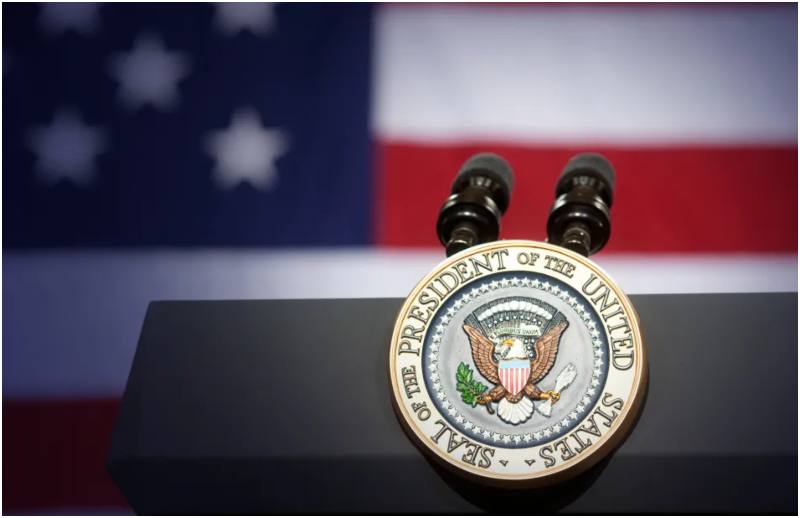Introduction
The office of the U.S. President is one of the most significant and powerful political roles in the world, serving as both the head of state and government.
The constitutional framework governing the presidency is outlined in the U.S. Constitution, primarily in Article II, and has evolved over the years through legal precedents, legislative action, and public interpretation.
This case study provides a comprehensive exploration of the legal aspects of the U.S. presidency, examining its constitutional foundation, executive powers, and key legal challenges that have shaped the office.
Constitutional Foundations and Presidential Powers
The U.S. Constitution outlines the role and powers of the presidency, emphasizing executive authority, foreign policy, national defense, and legislative functions. The President is granted significant powers, including the ability to veto bills, appoint federal judges and officials, negotiate treaties, and command the military. However, these powers are not absolute, and the Constitution incorporates checks and balances to prevent any one branch of government from becoming too powerful.
1. Article II of the U.S. Constitution
Article II, Section 1 of the Constitution establishes the office of the President and grants executive power to the President, making them the primary figure responsible for executing and enforcing federal laws. Key provisions of Article II include:
- The President’s election through the Electoral College system.
- The oath of office requiring the President to “preserve, protect, and defend the Constitution.”
- The President’s authority as Commander-in-Chief of the armed forces.
- The power to grant pardons, make treaties (with the Senate’s consent), and appoint ambassadors, judges, and other federal officials.
2. Expansion of Executive Power
Over the centuries, the scope of presidential power has expanded, especially through legal precedents set by the U.S. Supreme Court and the actions of individual Presidents. Two key areas of expansion are executive orders and executive agreements.
- Executive Orders: These are directives issued by the President to manage the operations of the federal government. While executive orders are not explicitly mentioned in the Constitution, they have become a powerful tool for Presidents to influence policy, especially in areas where Congress has been slow to act. Notable examples include President Franklin D. Roosevelt’s Executive Order 9066 during World War II, which authorized the internment of Japanese Americans, and President Harry S. Truman’s Executive Order 9981, which desegregated the military.
- Executive Agreements: These are international agreements entered into by the President without the need for Senate approval, in contrast to treaties. Executive agreements have been used extensively in foreign policy, particularly in situations where speed is critical.
3. The Impeachment Power
The impeachment power is one of the most critical legal mechanisms for holding the President accountable. The Constitution grants Congress the authority to impeach the President for “high crimes and misdemeanors” (Article II, Section 4), with the House of Representatives bringing charges and the Senate holding a trial. Throughout history, only three Presidents have been impeached: Andrew Johnson, Bill Clinton, and Donald Trump. However, none were convicted by the Senate, and as such, none were removed from office.
4. The Role of the Supreme Court in Shaping Executive Power
The U.S. Supreme Court has played a pivotal role in interpreting the Constitution and shaping the powers of the presidency. Landmark decisions such as United States v. Nixon (1974), which resulted in President Richard Nixon’s resignation following the Watergate scandal, and Youngstown Sheet & Tube Co. v. Sawyer (1952), which limited the President’s ability to seize private property, have set significant precedents in defining the limits of presidential authority.
In United States v. Nixon, the Court ruled that the President was not above the law, asserting that executive privilege could not be used to shield the President from judicial scrutiny. This case reinforced the principle of checks and balances, affirming the judiciary’s role in overseeing the actions of the executive branch.
5. Legal Challenges to Executive Power
Presidential actions often face legal challenges, especially when they are perceived to overstep constitutional boundaries or infringe on individual rights. Notable legal challenges have included:
- Executive Orders on Immigration: Various Presidents have issued executive orders that restrict immigration, often leading to legal battles. For example, President Donald Trump’s “Travel Ban” was challenged in court, with the U.S. Supreme Court ultimately upholding a modified version of the order in 2018.
- War Powers and Military Action: The War Powers Resolution of 1973 sought to limit the President’s authority to engage in military conflict without congressional approval. However, Presidents have repeatedly tested the limits of this law, with military actions taken without formal declarations of war, such as the 2011 intervention in Libya by President Barack Obama.
6. Presidential Pardons and Clemency
The power to grant pardons is one of the unique constitutional powers granted to the President. Article II, Section 2 states that the President “shall have Power to grant Reprieves and Pardons for Offenses against the United States, except in Cases of Impeachment.” This broad power has been a subject of controversy, particularly in high-profile cases. Presidents have used the pardon power to show clemency, correct injustices, or grant relief to political allies.
In recent years, Presidents have faced scrutiny over their use of the pardon power, with critics arguing that pardons have been used for political or personal gain. The most famous example is President Gerald Ford’s pardon of Richard Nixon following the Watergate scandal, which sparked widespread debate over the legality and ethics of the pardon.
Conclusion
The U.S. presidency, as defined by the Constitution, is a dynamic office with broad executive powers that have expanded over time. Legal challenges to presidential actions have continually shaped the office, ensuring that the President remains subject to constitutional checks and balances. As the nation faces new challenges, including national security, civil liberties, and executive authority, the legal landscape surrounding the presidency will continue to evolve, and the legal system will play a critical role in defining the limits of executive power.

